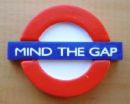Wall Street Journal Reuel Marc Gerecht January 8, 2010 [safety copy of entire piece below the fold]
Amid the Hysteria, A Look at What al-Qaeda Can't Do
TIME Magazine By Peter Beinart Monday, Jan. 18, 2010
National Journal By James Kitfield Saturday, Jan. 9, 2010 [Subscription]
Hidden behind walls of top-secret classification, senior U.S. government officials meet in what is essentially a star chamber to decide which enemies of the state to target for assassination. There is no single master list, but all names pass through an elaborate, multi-agency vetting process that ends at the level of the National Security Council and ultimately requires presidential approval.
Overwhelm. Divide. Spread. Bankrupt. Diversify: Al Qaeda's new grand strategy
Washington Post By Bruce Hoffman January 10, 2010
London Sunday Times By David Leppard and Hala Jaber January 10, 2010
Continue reading “Journal: What Al Qaeda Et Al Can and Cannot Do”

![[gerecht]](http://s.wsj.net/public/resources/images/ED-AK786_gerech_D_20100107190103.jpg)





